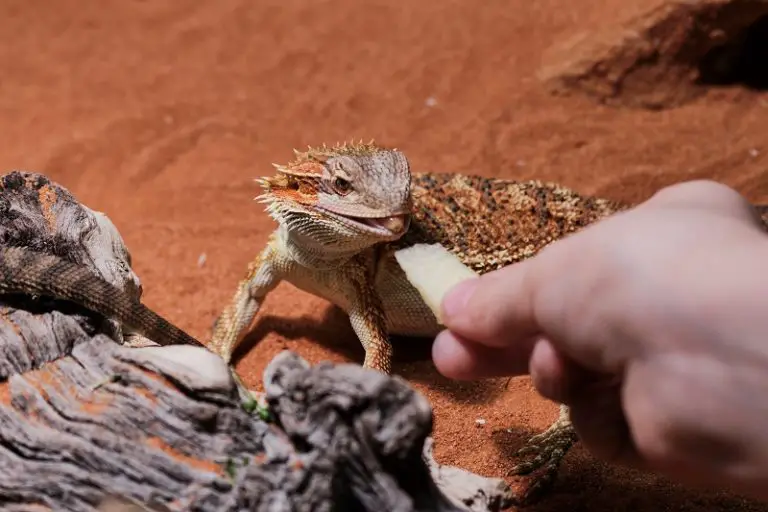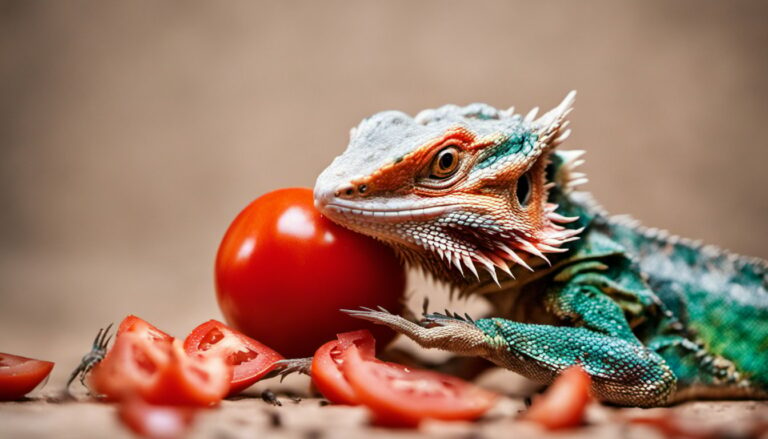How Often Do Bearded Dragons Shed: Essential Facts and Tips
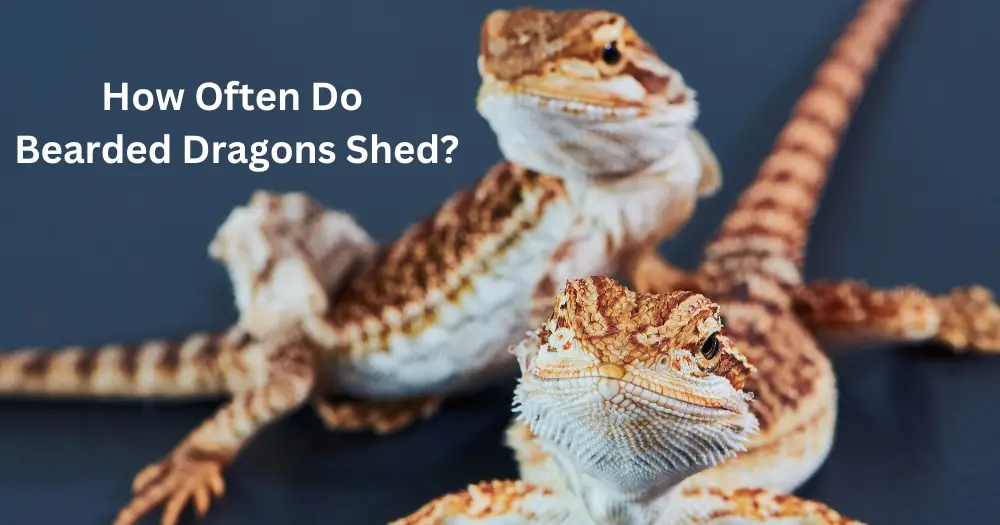
Bearded dragons are fascinating reptiles that are popular among pet enthusiasts. One of the most interesting aspects of these captivating creatures is their shedding process. How Often Do Bearded Dragons Shed? Let’s discover!
Being attuned to your bearded dragon’s shedding patterns and behavior is essential to keeping your pet healthy and comfortable. Shedding frequency in bearded dragons varies depending on their age and growth stage. Young dragons tend to shed more frequently, as they grow and develop at a rapid pace.
As they age and reach adulthood, their shedding patterns become less predictable and generally occur less often. Understanding the factors that influence shedding in bearded dragons can help you better care for your scaly companion and monitor their overall health.
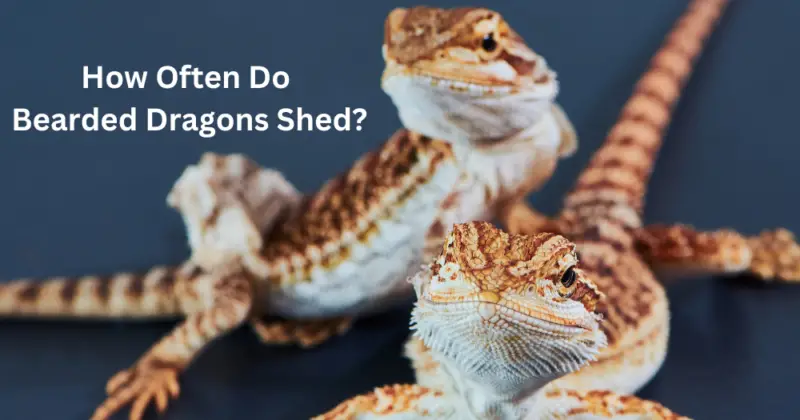
Contents
Table of Contents
How Often Do Bearded Dragons Shed: Overview
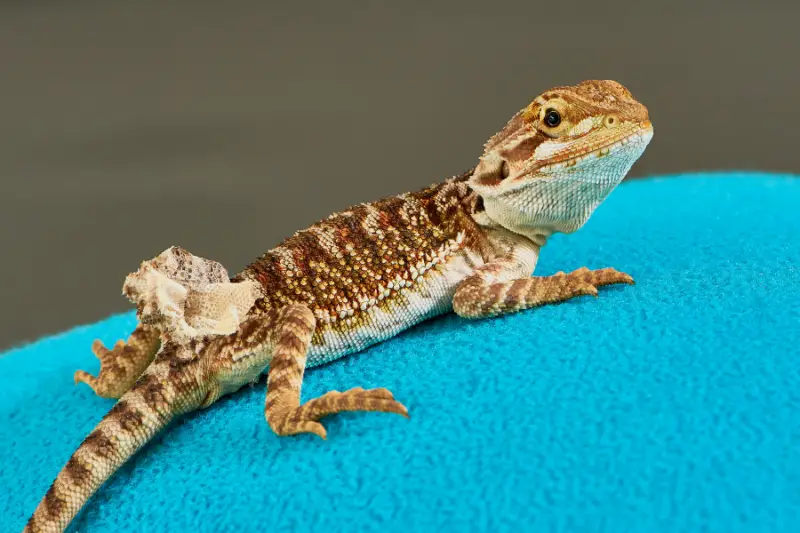
Natural Process
Bearded Dragon shedding, also known as ecdysis, is a normal and necessary part of their growth and development. As these reptiles grow, their outer layer of skin becomes too tight, so they shed their skin to accommodate their increasing size. The frequency of shedding varies depending on the age of the bearded dragon.
Young bearded dragons can shed their entire skin almost every week, whereas adult bearded dragons tend to shed less often, typically once or twice a year. Shedding occurs in smaller patches for adults compared to juveniles. It’s essential to remember that every dragon can have its own unique shedding pattern, so some may shed more frequently than others.
Ecdysis
Ecdysis is the scientific term for the shedding process that bearded dragons and other reptiles undergo. This process can take anywhere from a few days to two weeks for a shed to be complete. During ecdysis, you may notice changes in your bearded dragon’s behavior, such as:
- Increased restlessness
- Decreased appetite
- Seeking out rough surfaces to aid in removing the skin
To help your bearded dragon through the shedding process, you can:
- Set up their habitat properly with appropriate temperatures and humidity levels, ensuring their shedding process goes smoothly
- Never pull the skin off, as this may cause harm to the animal
- Mist their habitat and skin with water to keep the environment humid and aid in shedding
- Give them a warm bath to help remove skin that has already started to detach
- Try using a shedding formula or shedding aid to help ease the process
By understanding the natural shedding process of bearded dragons and implementing suitable techniques to help them cope, you can ensure your pet remains healthy and comfortable throughout ecdysis.
Signs of Shedding
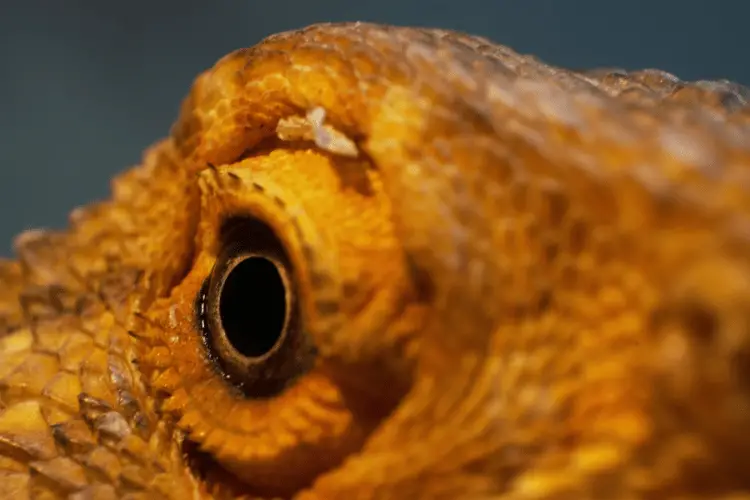
Behavioral Changes
During the shedding process, bearded dragons may exhibit a range of behavioral changes. One notable change is lethargy, which means that they are less active and may appear to sleep more. Another common behavioral change is irritability, wherein the bearded dragon may be more prone to grumpy behaviors and may not want to be handled.
Physical Changes
Alongside behavioral changes, bearded dragons will also undergo several physical changes when shedding. Among these physical changes are:
- Flaking: As a bearded dragon prepares to shed, small patches of skin may begin to flake off, signaling the start of the shedding process.
- Skin color: During shedding, a bearded dragon’s scales may look faded in color or turn milky white. It is a common sign that the shedding process is imminent.
- Bulging: One of the more distinctive signs of shedding in bearded dragons is eye bulging. Their eyes may appear dull and whitish-blue, as the bulging eyes help loosen the skin around their head and eyes.
In summary, both behavioral and physical changes in your bearded dragon are important indicators of the shedding process. Being familiar with these signs will help you provide the best care for your pet during this crucial period.
Watch these Bearded Dragon Shedding Tips:
Shedding Aid and Care
Habitat
When it comes to your bearded dragon’s shedding process, their environment plays a vital role. Ensure that their enclosure is the appropriate size, has the proper lighting essentials, and maintains an optimal temperature gradient. A well-structured habitat is key to supporting your beardie’s health and growth.
Humidity
Maintaining proper humidity levels is essential in aiding the shedding process. Bearded dragons require a humidity level of around 30-40%. Use a hygrometer to monitor the humidity in the enclosure. You can also lightly mist the enclosure with water or use a reptile-specific humidity device if needed to maintain appropriate levels.
Bathing
Bathing your bearded dragon can greatly assist in shedding. Soaking your beardie in a warm, shallow bath for 10-15 minutes once or twice a week can help soften the skin and promote shedding. Gently rub their body with your fingers or a soft toothbrush to help remove any loose skin, but be careful not to force it off.
Stuck Shed
Sometimes a bearded dragon’s shed may become stuck or take longer to come off than expected. In these cases, you can take additional measures to help alleviate the issue:
- Increase humidity levels temporarily, but ensure it returns to the recommended range afterward.
- Provide a rough surface or accessory within the enclosure where your beardie can rub against and encourage shedding.
Always monitor your bearded dragon’s shed closely and contact a reptile veterinarian if you have any concerns about their shedding process or overall health.
Factors Affecting Shedding
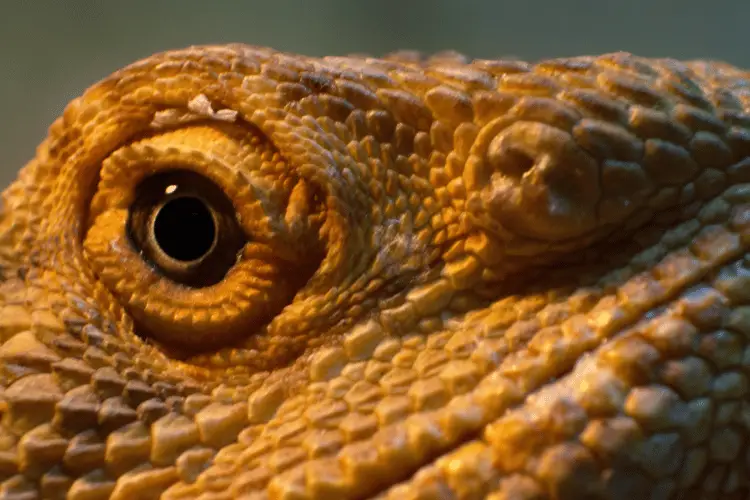
Diet and Nutrition
A bearded dragon‘s shedding frequency can be influenced by its diet and nutrition. Proper intake of essential nutrients is vital for their growth and overall health. Feeding a balanced diet consisting of live insects, vegetables, and fruits helps ensure that your bearded dragon receives the right nutrition needed for a healthy shedding process.
It is crucial to pay special attention to calcium intake as it directly impacts a bearded dragon’s overall skeletal structure. Calcium is required for proper bone growth and structure and can be given through their diet or by using a calcium supplement. Make sure to consult a vet for proper calcium supplementation to support healthy shedding.
Stress and Illness
Another factor influencing a bearded dragon’s shedding is stress and illness. Stress can arise from environmental factors such as incorrect temperature, inadequate lighting, or a sudden change in their environment. Bearded dragons experiencing stress or illness may have irregular or delayed sheddings. It is essential to monitor their overall health and wellbeing and ensure that their environment stays stress-free.
If a bearded dragon is suffering from illness or has a loss of appetite, it may affect the shedding process. Seeking advice from a vet is vital in such situations to determine the best course of action for your reptile friend. Addressing health issues, ensuring a proper diet, and creating a comfortable living environment will help support the shedding process and promote overall health for your bearded dragon.
Common Shedding Issues

Dysecdysis
Dysecdysis, also known as abnormal or difficult shedding, is a common issue faced by bearded dragons. This can be a result of various factors, including low humidity levels or poor husbandry practices. Stuck shed is a common manifestation of dysecdysis where the old skin fails to properly peel off, causing discomfort and potential health problems for the dragon.
To prevent and handle stuck shed, it’s essential to maintain proper humidity levels, provide a balanced diet, and offer regular baths to your bearded dragon. If the problem persists, you may consider using a shedding bath formula.
Injury
Injuries to bearded dragons can sometimes occur during the shedding process. While shedding, bearded dragons may become more sensitive and susceptible to injury, as their skin is more delicate during this time. To minimize the risk of injury, be sure to handle your bearded dragon gently and with care during their shedding period.
It’s also critical to ensure that their habitat is safe and hazard-free, as this can help prevent accidents and further injury while they’re shedding.
Damage
Damage to a bearded dragon’s body parts, such as their fingers, toes, and tail, can occur if they experience stuck shed or improperly shed their skin. Stuck shed can restrict blood flow to these extremities, potentially leading to necrosis and the necessity to amputate the affected body part.
To avoid this, it’s essential to monitor your bearded dragon’s shedding process closely and take the necessary steps to help them through it. Regularly misting their habitat, providing baths, and ensuring proper humidity levels are crucial factors in preventing damage during shedding.
Additionally, it’s important to address any underlying husbandry issues, such as poor diet, to ensure your bearded dragon remains healthy and can successfully shed.
How to Support Bearded Dragon during Shedding Process
During the shedding process, bearded dragons may require additional support to help them shed effectively and maintain their overall well-being. Here are some ways you can support your pet through this natural process.
First, ensure their enclosure is suitable for the shedding process. Provide a UVB light to promote healthy skin development and shedding. In addition to UVB light, keep their enclosure clean and maintain the right temperature and humidity levels.
- Temperature: Adult bearded dragons require a 90-95°F basking area, with a cooler side in the range of 75-80°F. Juveniles need a slightly warmer basking area, between 95-100°F.
- Humidity: Keep the humidity level in the enclosure around 30-40%, as too much or too little can contribute to shedding issues.
Proper hydration plays an essential role in bearded dragon shedding. Provide a shallow water dish for your pet to drink from and occasionally mist their habitat with water, especially during shedding. A warm bath can also be beneficial in helping to remove skin that has already started to detach.
Diet is another important aspect of shedding support. Offer a balanced diet that includes insects dusted with calcium powder to ensure healthy bone development and promote proper shedding. Bearded dragons also benefit from a variety of fresh fruits, vegetables, and leafy greens, in addition to their primary insect-based diet.
Placing rough materials, such as rocks, branches, or designated reptile hides in the enclosure will help your bearded dragon shed more easily by providing a surface to rub against. This ensures that they can properly remove the loose skin during the shedding process.
By following these guidelines, you can support your bearded dragon through the shedding process, maintaining their health and comfort throughout this crucial stage in their life.
FAQs:

Q: How often do bearded dragons shed their skin?
A: Bearded dragons typically shed their skin every 4 to 6 weeks during their growth phase. However, the frequency may vary depending on their age, health, and environmental conditions.
Q: What are the signs that my bearded dragon is about to shed?
A: Some common signs that your bearded dragon is about to shed include a dull appearance to their skin, a whitish or grayish hue, decreased appetite, increased hiding, and rubbing against objects in their enclosure.
Q: How can I help my bearded dragon during the shedding process?
A: To assist your bearded dragon during shedding, ensure a proper humidity level in their habitat by providing a humid hide or misting their enclosure lightly. Additionally, offer shallow water bowls for them to soak in, which can aid in loosening the old skin.
Q: Is it normal for bearded dragons to eat their shed skin?
A: Yes, it is common for bearded dragons to eat their shed skin. This behavior is considered normal and can provide them with additional nutrients. However, if your dragon doesn’t eat the shed skin, there’s no cause for concern.
Q: What should I do if my bearded dragon is having difficulty shedding?
A: If your bearded dragon is experiencing difficulties during shedding, you can try gently misting them with lukewarm water to help hydrate the skin and facilitate the process. If the shedding problem persists or if you notice any signs of distress, consult a reptile veterinarian for further assistance.


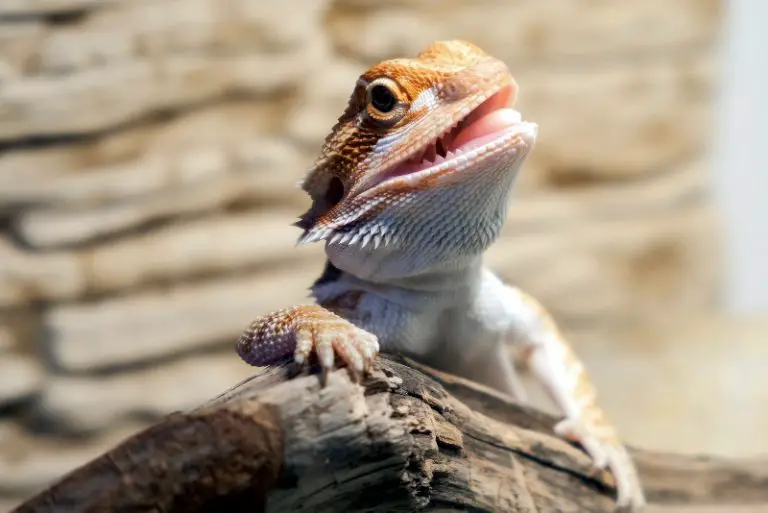
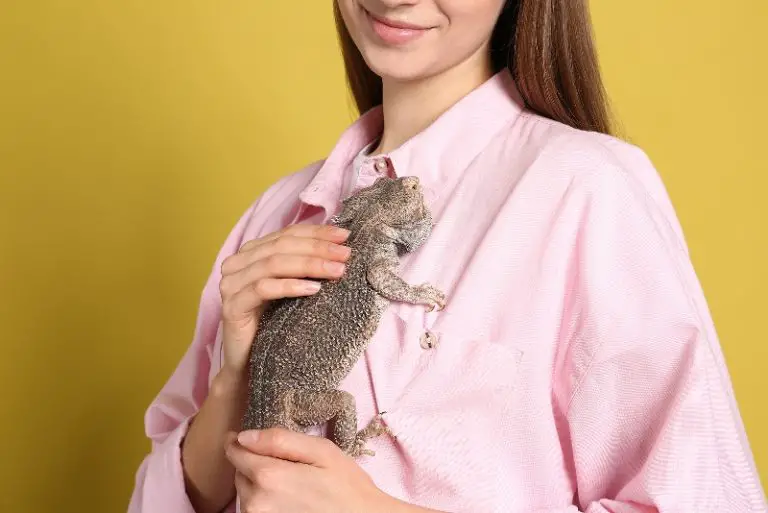
![What Do Bearded Dragons Do For Fun? [Activities & Toys]](https://allourcreatures.com/wp-content/uploads/2021/10/bearded-dragon-1-768x514.jpg)
